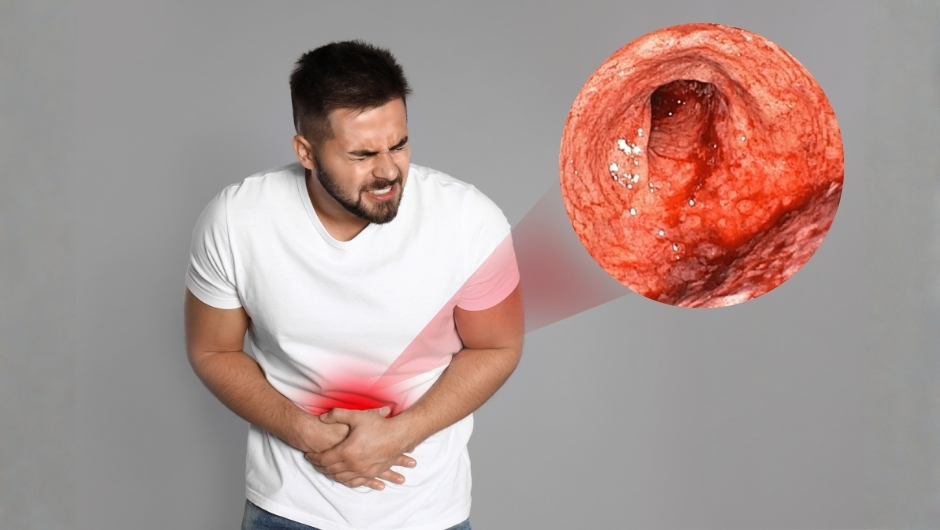How Hidden Mold Causes Bowel Disease

When people hear the word mold, they usually imagine something visible: black spots growing on damp walls or a patch on old bread. But the reality is more hidden and far more common. Mold can grow quietly behind walls, under floors, behind bathroom tiles, inside air conditioners, or in places where moisture stays but light does not reach. Because you cannot see it, you may never realize it is there. Yet your body may be reacting to it every single day.
Studies suggest that a very large portion of the global population is exposed to mold without realizing it. This exposure does not always come from breathing. Mold releases extremely tiny particles called spores and toxins that can enter the body through breathing, food, water, and even skin contact. Once these toxins enter the bloodstream, they can travel anywhere in the body. One of the first and most affected places is the gut.
The Gut, Your Second Brain
Your gut is not just a digestive organ. It is one of the most important systems in your body. It contains most of your immune cells, millions of nerve cells, and trillions of bacteria that help keep you healthy. These bacteria are incredibly important. They help you:
- Break down food
- Absorb nutrients
- Control inflammation
- Produce hormones
- Support mood and memory
When the gut is balanced, your body functions smoothly. But mold can disturb this balance in a quiet but powerful way.
How Mold Harms the Gut
When mold toxins enter the body, your immune system immediately reacts to them. This reaction is meant to protect you, but it also creates inflammation. Over time, this inflammation affects the lining of your gut. The gut lining becomes irritated, sensitive, and in some cases, damaged. This is where problems begin.
A weakened gut lining becomes “leaky,” allowing toxins and undigested food to enter the bloodstream. This is known as leaky gut, and it triggers more inflammation throughout the body. This can show up as bloating, gas, loose stools, constipation, food sensitivities, and pain after meals. Many people blame certain foods, yet the deeper cause is the mold affecting the gut lining.
Another issue is that mold has a natural antibacterial effect. It does not choose what to kill. It affects the helpful bacteria in your gut just as much as harmful bacteria. When good bacteria die off, harmful bacteria and yeast start taking over. This imbalance leads to digestive discomfort and sometimes long-term bowel conditions such as IBS, Crohn’s disease, and colitis.
Mold and Allergic Reactions
Mold also triggers what are called mast cells. These cells release histamines, which are chemicals involved in allergic reactions. Once histamines are released, the body may react in many different ways. Some people notice more sinus pressure, headaches, sneezing, or constant stuffiness. Others may experience coughing, tightness in the chest, or asthma-like symptoms. What many people do not realize is that the gut can also react to histamines. This means mold exposure can directly lead to stomach cramping, nausea, diarrhea, or irritation after eating.
Why Mold Makes You So Tired
Another quiet effect of mold is on your energy. Inside each cell in your body are tiny energy generators called mitochondria. They are the reason you can think, move, digest, and heal. Mold toxins damage these mitochondria, reducing your body’s ability to make energy. When this happens, no amount of sleep feels refreshing. People start experiencing brain fog, memory problems, mood swings, muscle weakness, and chronic fatigue. Everyday tasks begin to feel heavier and slower.
The Liver Becomes Overloaded
The liver has the job of removing toxins from your blood. But mold toxins are especially heavy for the liver to process. When they come in continuously, the liver becomes overloaded. Instead of removing toxins, the body begins recycling them back into the bloodstream. This creates a cycle where inflammation increases, the gut suffers more damage, and the immune system becomes tired and confused. Over time, this can lead to autoimmune reactions and long-lasting digestive diseases.
The Silent Nature of Mold Illness
The most challenging part of mold-related gut illness is that it is invisible. You may not see mold in your home. Your medical reports may look “normal.” You may try changing your diet many times and still feel stuck. This is because the problem is not the food. The problem is the environment influencing your gut.
Healing Requires a Different Approach
To truly improve gut health when mold is involved, treatment must focus on:
- Reducing mold exposure in the environment
- Restoring gut lining strength
- Supporting the body’s ability to detox
- Slowly rebuilding healthy gut bacteria
When the environment becomes healthier, the gut finally has a chance to heal.